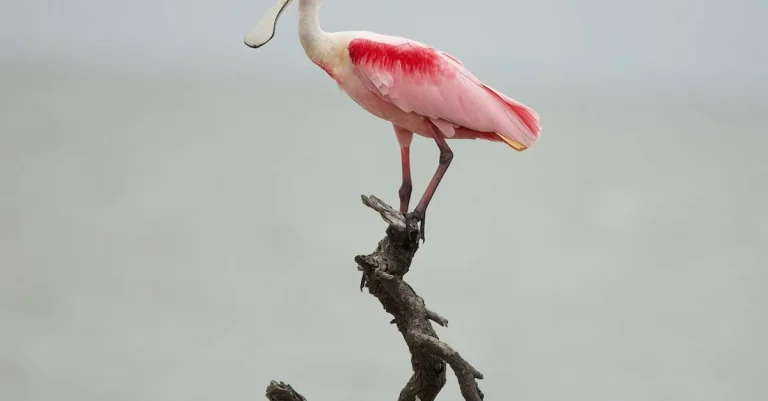Do Palm Trees Grow Naturally In Florida?
With over 20 species of native palms, majestic palms swaying in the ocean breeze are an iconic part of Florida’s tropical landscape. But are those iconic palm trees actually native to Florida, or were they brought there from elsewhere?
If you’re short on time, here’s a quick answer to your question: Yes, there are several species of palm trees that are native to Florida and grow naturally in the wild throughout the state.
In this comprehensive guide, we’ll explore the different types of native and non-native palm trees found in Florida, look at their origins and natural ranges, discuss factors that allow them to thrive in Florida’s climate, and explain why certain species have become so emblematic of the state over time.
Native Florida Palm Trees
When picturing the sunny state of Florida, it’s hard not to envision the iconic palm trees swaying in the breeze. But are these palm trees native to the state or were they brought in from elsewhere? Let’s take a closer look at some of the native palm trees that call Florida home.
Sabal palmetto
The Sabal palmetto, also known as the cabbage palm, is the state tree of Florida. It is a native palm species that can be found throughout the state, from the coastal areas to the inland regions. This palm tree can reach heights of up to 80 feet and is known for its large, fan-shaped leaves.
The Sabal palmetto is not only a beautiful addition to Florida’s landscape but also provides habitat and food for various wildlife species.
Florida thatch palm
The Florida thatch palm, also known as the Thrinax radiata, is another native palm tree that can be found in Florida. This palm tree is characterized by its slender trunk and fan-shaped leaves. It is typically found in coastal areas and can tolerate salt spray, making it a popular choice for landscaping in beachfront properties.
The Florida thatch palm adds a touch of elegance and tropical charm to any landscape.
Florida silver palm
The Florida silver palm, scientifically known as Coccothrinax argentata, is a small to medium-sized palm tree that is native to southern Florida. It gets its name from the silvery-white color of the underside of its fronds.
This palm tree is well-adapted to Florida’s sandy soils and can withstand harsh coastal conditions. Its unique appearance and resilience make it a sought-after addition to gardens and parks.
Florida royal palm
The Florida royal palm, or Roystonea regia, is a majestic native palm tree that can reach heights of up to 100 feet. It is known for its slender trunk, large pinnate leaves, and a crown of drooping leaflets.
This palm tree is commonly found in southern Florida and adds a touch of grandeur to the landscape. In addition to its aesthetic appeal, the Florida royal palm also provides nesting sites for various bird species.
Paurotis palm
The Paurotis palm, also known as the Everglades palm or Acoelorraphe wrightii, is a native Florida palm tree that is primarily found in the Everglades National Park. It is characterized by its clustering trunks and fan-shaped leaves.
The Paurotis palm is well-suited to wetland environments and can tolerate periods of flooding. Its natural beauty and ability to thrive in challenging conditions make it a popular choice for landscaping in wetland areas.
These are just a few examples of the native palm trees that can be found in Florida. Their presence not only enhances the beauty of the state but also contributes to its rich biodiversity. So the next time you see a palm tree in Florida, you can appreciate that it is not just an imported symbol of paradise but a part of the state’s natural heritage.
Non-Native Palm Trees Common in Florida
While Florida is known for its abundance of palm trees, many of the species found in the state are actually non-native. These palms have been introduced to Florida’s landscape and have thrived in the warm and tropical climate.
Coconut palm
One of the most iconic palm trees in Florida is the coconut palm (Cocos nucifera). Although not native to the state, it is commonly associated with tropical beaches and adds a touch of paradise to the landscape.
The coconut palm is known for its tall and slender trunk, topped with a crown of feathery green fronds.
Date palm
The date palm (Phoenix dactylifera) is another non-native species that is commonly found in Florida. With its long, arching fronds and sweet edible fruit, the date palm adds a touch of elegance to the scenery. It is often planted in residential areas and parks for its ornamental value.
Mediterranean fan palm
The Mediterranean fan palm (Chamaerops humilis) is a small, slow-growing palm tree that is native to the Mediterranean region but has become naturalized in Florida. It is characterized by its fan-shaped leaves and dense clusters of small, black fruits.
This palm is often used in landscaping due to its ability to tolerate a wide range of soil and climatic conditions.
Chinese fan palm
The Chinese fan palm (Livistona chinensis) is a non-native palm tree that is commonly found in Florida’s urban areas. It is known for its distinctive fan-shaped leaves and slender trunk. This palm tree is often used as a street tree due to its ability to tolerate pollution and urban conditions.
Queen palm
The queen palm (Syagrus romanzoffiana) is a non-native palm tree that is widely planted in Florida for its graceful appearance and tolerance to a variety of soil types. It is characterized by its feathery fronds and large clusters of orange fruit.
The queen palm is often used in landscaping as a focal point or accent tree.
While these non-native palm trees have become a common sight in Florida, it is important to note that there are also native palm species that are indigenous to the state. These native palms, such as the saw palmetto (Serenoa repens) and the cabbage palm (Sabal palmetto), have adapted to Florida’s unique ecosystem over thousands of years.
Ideal Conditions for Palm Growth
Warm climate
Palm trees thrive in warm climates and are commonly associated with tropical and subtropical regions. Florida’s climate provides the ideal conditions for palm growth, with its warm temperatures and mild winters.
The state’s average annual temperature ranges from 70 to 80 degrees Fahrenheit, creating a perfect environment for various palm species to flourish.
Sunny exposure
Palm trees require ample sunlight to grow and thrive. Florida’s abundant sunshine throughout the year ensures that palm trees receive the necessary light for their photosynthesis process. The state’s sunny exposure allows for the development of strong and healthy palm trees, contributing to the lush landscapes that Florida is known for.
Moisture availability
While palm trees can tolerate dry conditions, they still require a certain level of moisture availability to grow and survive. Florida’s proximity to large bodies of water, such as the Atlantic Ocean and the Gulf of Mexico, ensures that there is enough moisture in the air to support palm growth.
Additionally, the state receives a significant amount of rainfall, further contributing to the moisture availability for palm trees.
Well-drained soils
Palm trees prefer well-drained soils that allow water to pass through easily. Florida’s sandy soil composition, particularly in coastal areas, provides the ideal drainage conditions for palm trees. The sandy soil allows excess water to drain quickly, preventing waterlogged conditions that can be detrimental to palm tree roots.
This allows palm trees to establish strong root systems and thrive in Florida’s unique soil conditions.
For more information on palm tree growth and care, you can visit Florida-Palm-Trees.com, a reputable website dedicated to all things palm trees in Florida.
History of Palm Trees in Florida
Palm trees have become synonymous with the state of Florida, adorning its landscapes and providing a tropical ambiance. But have these iconic trees always been native to the Sunshine State? Let’s delve into the fascinating history of palm trees in Florida.
Prehistoric native ranges
Long before human settlement, palm trees were already thriving in what is now Florida. Fossil records indicate that certain species of palms, such as the Sabal palm, have been growing in the region for millions of years.
These prehistoric palms played a vital role in the state’s ecosystems, providing food and shelter for various animal species.
Spread by Native Americans
The Native Americans living in Florida recognized the value of palm trees and their many uses. They used palm fronds for roofing, weaving baskets, and creating tools. Additionally, they consumed the palm’s fruit and sap.
As a result of their interactions with these trees, Native Americans unintentionally spread palm seeds across the state, contributing to their further proliferation.
Cultivation on plantations
During the colonial era, European settlers recognized the economic potential of palm trees. They established plantations for cultivating palms, primarily for their coconuts and oil. These plantations played a significant role in the early agricultural development of Florida, providing valuable resources and contributing to the state’s economy.
Tourism promotion
In the late 19th and early 20th centuries, Florida began to promote itself as a tourist destination. Palm trees played a crucial role in this marketing strategy, epitomizing the state’s exotic allure. Picturesque images of palm-lined beaches and lush landscapes enticed visitors from all over the world, fueling the growth of Florida’s tourism industry.
Modern popularity and preservation
Today, palm trees continue to be an integral part of Florida’s identity. They grace the streets, parks, and private properties, providing shade and beauty. Numerous palm species, both native and exotic, thrive in the state’s tropical and subtropical regions.
Efforts are also being made to preserve and protect these iconic trees, as they are not only visually appealing but also contribute to the overall biodiversity of the region.
Conclusion
With their tropical look and ability to thrive in Florida’s warm climate, palm trees have become a staple landscape fixture across the state. While palms like coconut, date, and queen palms originate elsewhere, Florida is home to a several iconic native species, like the sabal palm, that have grown in the region for thousands of years.
So next time you visit Florida and take in the sights of majestic palm trees swaying in the ocean breeze, know that many of those palms do indeed call Florida their natural home.








